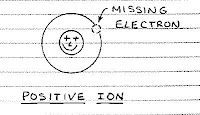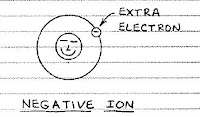(Elektronika Dasar)
Electrical Circuit
Read more..
Electrical Circuit
An electrical circuit is any arrangement that permits an electrical current to flow. A circuit can be as simple as a battery connected to a lamp or as complicated as a digital computer.
A Basic Circuit
This basic circuit consists of a source of electrical current (a battery), a lamp and two connection wires. The part of a circuit which performs work is called the load. Here the load is lamp. In other circuits the load can be a motor, a heating element, an electromagnet, etc.
A Series Circuit
A circuit may include more then one component (switch, lamp, motor, etc). A series circuit is formed when current flowing through one component first flows through another. (Arrows show direction of electron flow)
A Parallel Circuit
A parallel circuit is formed when two or more components are connected so current can flow through one component without having first to flow through another.
A Series-Parallel Circuit
Many electrical circuits are both series and parallel. All provide a complete path between the circuit and its power supply.
Circuit Diagrams
Thus far the electrical circuits shown have been illustrated in pictorial form. In a circuit diagram pictorial views of component are replaced by component symbol.
Electrical "Short" Circuit
When a wire or other conductor is placed across the connection of a component, some or all of any current in the circuit may take a shortcut through the conductor. "Short" circuit such as this are usually undesirable at best. They can cause batteries to rapidly lose their capacity. And they can cause damage to wiring and components. "Short" circuit can even cause enough heat to ignite the insulation on a wire! Caution: the human body conducts electricity. Therefore carelessly touching an electrical circuit may cause a "short" circuit. If the voltage and current are high enough, you may receive a dangerous or even lethal shock.
Electrical "Ground"
One of the wires of the AC lines is connected to earth by a metal rod. Metal enclosures of electrically powered devices are connected to this ground wire. This prevents a shock hazard should a non-grounded wire make contact with the metal enclosure. Without the ground connection, a person touching the device while standing on the ground or a wet floor might receive a dangerous shock. Ground also refers to the point in a circuit at zero voltage, whether or not it's connected to ground. For instance, the minus (-) side of the battery in the circuit below can be considered ground.
That was a bit about basic electronics. Wait for the discussion of other electronics in the next article :)
The End.
Simple Basic Electronics (part 1) Simple Basic Electronics (part 2)
Simple Basic Electronics (part 3)
Simple Basic Electronics (part 3)

























